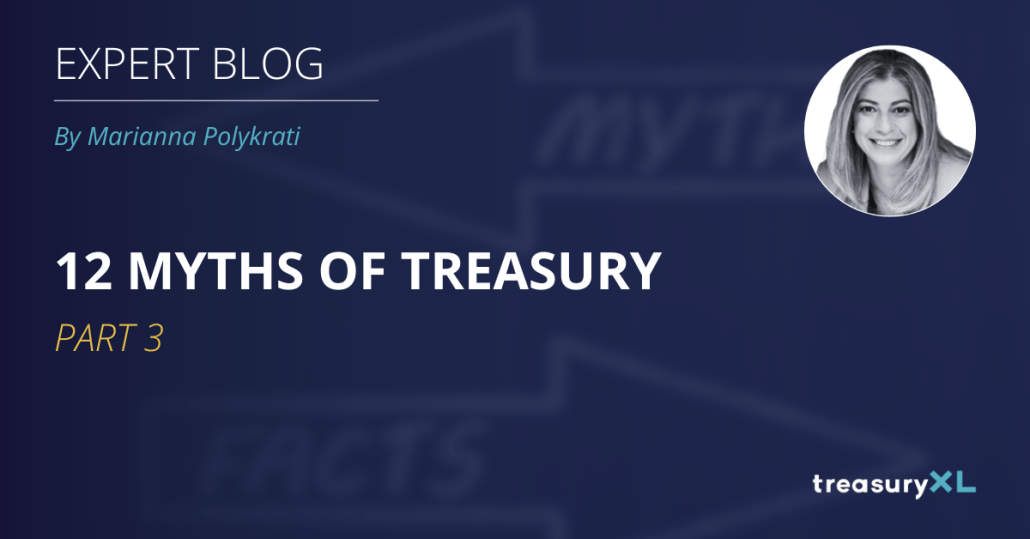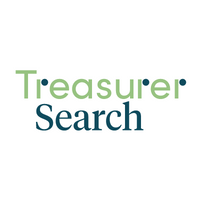Myth 7: “Treasurers Don’t Need Leadership Skills”
Treasurers are often seen as technical specialists who focus purely on numbers, systems, and processes. This view assumes that leadership isn’t necessary for their role since they are perceived as operating in the background, removed from decision-making or team management.
Treasurers are not just number crunchers—they are leaders. Whether it’s managing teams, influencing stakeholders, or guiding the organization through financial crises, strong leadership skills are essential to success in treasury.
Treasurers are increasingly recognized as strategic leaders. There is an increasing trend of treasurers being invited to participate in executive committees, advisory boards or even hold board positions, reflecting their influence and ability to navigate complex challenges.
Interestingly, there’s a misconception about what leadership means in treasury (and not only). I’ve encountered situations in interviews, where the focus was solely on how many people I had in my team. Explaining that how leadership in treasury often involves cross-functional efforts and influencing stakeholders across departments –rather than simply managing a large team– was not always easily understood. True leadership in treasury lies in the ability to align diverse functions and drive strategic outcomes, not just in the number of direct reports.
In times of crisis, treasury leadership becomes even more apparent.
During liquidity crunches, treasurers lead efforts to stabilize cash flow, negotiate with banks, suppliers, and customers, and implement innovative solutions like real-time cash flow forecasting tools. By fostering collaboration across teams and maintaining clear communication with stakeholders, treasury ensures financial resilience and continuity.
Leadership is about more than giving directions—it’s about inspiring trust, making tough decisions, and ensuring the entire organization feels confident in its financial future. Without strong leadership, treasury’s strategic potential cannot be fully realized.
Myth 8: “Treasury Is Only Relevant in Large Companies or Groups.“
There’s a belief that treasury is a function reserved for large corporations with complex financial structures and significant cash flows. Smaller businesses or organizations with simple structures—such as single-entity operations—often assume their treasury needs are minimal or non-existent. Statements like, “Our company doesn’t have a group of entities, so our treasury function is simple and easy,” are common misconceptions.
Additionally, some finance directors in businesses exceeding €100 million in revenue believe treasury isn’t necessary because they view their responsibilities as limited to cash collection, payments, and managing loans. What they often fail to recognize is that adding a treasurer not only enhances financial optimization but also frees up their time to focus on more strategic aspects of the business.
Treasury is essential in businesses of all sizes and structures. While the complexity of operations may differ, the principles of managing liquidity, optimizing cash flow, and mitigating financial risks are universal. There’s no revenue threshold or number of entities in a group that dictates the necessity of a treasury function—it’s about ensuring the financial health and efficiency of the organization.
For example, in smaller companies, treasurers may focus on managing liquidity to ensure operational stability, negotiating funding with banks, or implementing tools for cash flow forecasting. Even in a straightforward business model, treasury brings expertise that can uncover efficiencies, improve cost structures, and mitigate risks that might otherwise be overlooked.
From my own experience, I’ve seen treasury play a pivotal role in medium-sized companies, implementing strategies that not only stabilized cash flow but also supported growth and innovation. The misconception that treasury is irrelevant in smaller or simpler organizations often leads to missed opportunities for financial resilience and optimization.
Treasury isn’t about the size of the company; it’s about the importance of managing its financial health strategically and efficiently—no matter the scale or complexity.
Myth 9: “FX Hedging is Just Gambling“
There’s a common perception that FX hedging is risky, speculative, and akin to gambling. Some believe it’s about taking chances on currency fluctuations rather than strategically managing financial risks.
FX hedging is far from gambling—it’s a calculated risk management strategy. By mitigating exposure to currency fluctuations, treasurers protect the company’s cash flows, profitability, and overall financial health. It’s about predictability and stability, not speculation.
I recall once, when presenting internally the hedging of an exotic currency, an executive telling me, “If you knew where exchange rates would move, you wouldn’t be working for a company—you’d be a freelancer making millions from speculation.” The reality is, treasurers are risk-averse by nature, and hedging is about safeguarding the business, not betting on markets.
For example, hedging an investment/CAPEX with predetermined payment schedules, we protect cash flows by ensuring the company is not exposed to unexpected rate changes.
Treasurers are risk averse but the truth is that we usually we don’t proceed with 100% hedging. Even hedging partially, say 50%, can provide better accuracy in cash flow forecasting while allowing flexibility for market conditions. It depends upon the risk appetite of the company, and the risk policies in place.
Another challenge that I’ve faced, is addressing the perception that hedging is expensive. It’s important to note that hedging is most effective when markets are stable — delaying action until volatility strikes, such as say waiting for the Russian ruble to devalue before considering a hedge, is both costly and in many cases too late. Treasurers must be proactive to avoid compounding risks. The problem though is that only when the problem arises, treasury is heard.
FX hedging is not about speculation; it’s about preparation. By implementing thoughtful strategies, treasurers enable the business to navigate global markets confidently and focus on growth without fear of financial surprises.
Catch the recording of Marianna and her fellow panelists discussing Generational Diversity in Treasury!
As generational diversity reshapes treasury teams, fresh perspectives meet time-tested strategies. But with it come challenges and opportunities in communication, expectations, and work styles. Marianna’s insights are not to be missed














